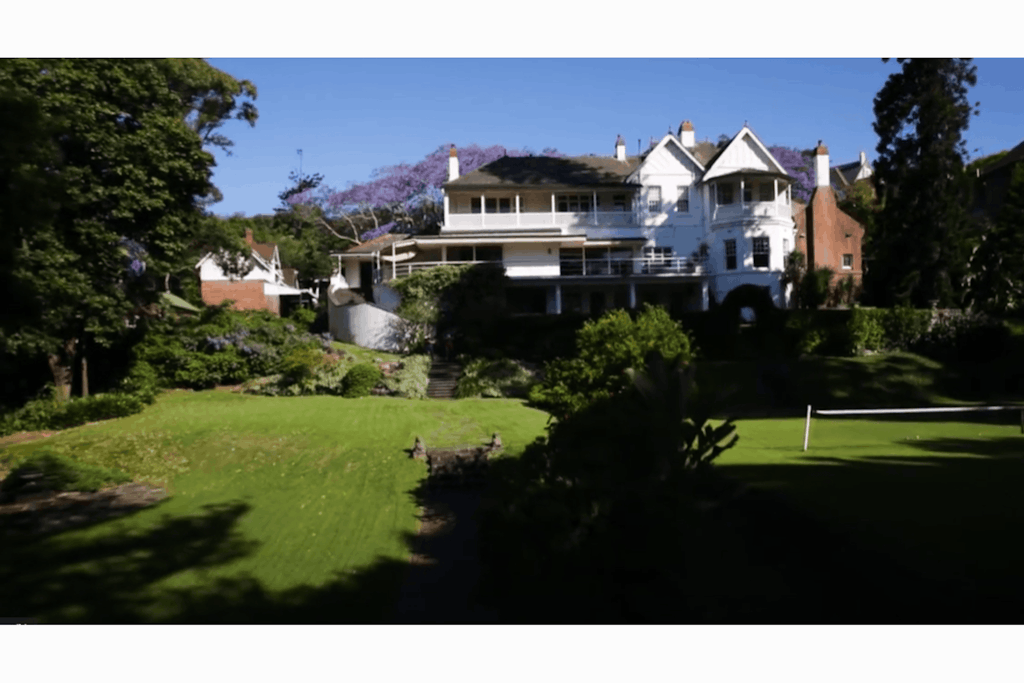A $130 million Sydney Harbour trophy home could be in line to provide desperately needed beds in aged care
Published on 25 September 2025

With RAC numbers as they are currently, an estimated 130,000 new beds are likely needed by 2034, as well as further options for supported retirement living. Some of that capacity may be created from an eye-brow raising source. A consortium of owners that bought ‘Elaine’, the 1863 Sydney trophy home, may consider turning the home into a retirement and aged care facility.
With the huge numbers of the boomer cohort set to start entering aged care in the coming years and decades, from all sides in health and aged care, the responsibility and solves discussion has been intensifying. The numbers are significant. Some estimate that 350,000 beds, and wider aged care capacity, will be needed within ten years. Creative and unexpected ways to reach the capacity needed in the years to come, must be considered by public planning, non-profit and private business.
Plans to convert into aged care capacity
Sources involved with the ongoing plans, including the well-known architect currently contributing to the redevelopment plans and process, are quick to say that no definitive decision has been established for the future of the historical mansion’s demolition or renovation. However, the plans for the conversion include mention of a possible conversion into a retirement and aged care facility.
Nestled between the affluent Sydney suburbs of Double Bay and Point Piper, the home has been on the land for 162 years as a residential home. Yet in a potential twist in purpose for the home, the scoping report shows that the new owner, 550 NSHR Pty Ltd, is weighing up its options to turn the 7000-square-meter block into a space catering to aged care capacity, including independent living units.
30 independent living units and 40 RAC beds
Further details have emerged when examining the early proposal documents submitted by consultancy Pacific Planning to the NSW State government. While 130,000 RAC beds is a considerable lift for the government and aged care sector, providers are clear, it will take the collaborative effort of public and private actors to be ready for the incoming boomer cohort. The submitted plans show that 30 independent living units are proposed, as well as 40 RAC beds. Included in the plans as well is an ancillary health and well-being hub on the premises and community facilities to support the comprehensive provision of aged care on-site.
High-profile architect Alec Tzanners, no stranger to large projects catching the public eye, having created the masterplan for inner city Central Park project, is working closely with the owner’s consortium as they navigate the plans. While he clearly tells the AFR that there is no final decision, to demolish the existing buildings on the grounds to facilitate the build towards aged care capacity, it may be that plans are being considered to renovate the structure to accommodate aged care use and retaining elements of the historical façade to honour the home.
Speaking to AFR he says, “There’s going to be a substantial study around what to do with the property, which involves understanding the conservation and all the elements, but there’s been no work done which defines which pathway … we will take.”
Dementia capacity
The Australian Institute of Health and Welfare has confirmed the grim number one spot that dementia has as the leading cause of death in Australia. Figures released show that 17,400 people died from deaths due to dementia in 2023. The need to build capacity to meet the care requirements of those diagnosed with dementia is immediate and profound.
Of the 40 beds that are proposed within the initial planning documentation submitted to the State government, the entirety are intended to be built within a “dementia-friendly design”. The report goes on to state that the RAC configuration will hold, “approximately 40 beds configured in small household models.”
Holistic care
The report details that a general practice medical clinic will be included in the aged care offerings on the site, supported by “allied health suits, rehabilitation gym, hydrotherapy pool and dementia care programs.”
In a move that may bode well with approval and bring the community on-side, the proposal includes a host of community focused amenities.
The report details plans for, “hospitality and lifestyle facilities (café, library, art studio, gardens, multipurpose rooms) accessible to both residents and the wider community.”
Changing land use
The tension between government messaging of slow provider build rates, and provider discussion of considerable impediments, highlights particular points of difficulty to get the outcomes needed for Australia.
More beds are simply needed. With the twist of an illustrious block being considered for re-development into aged care use, a shift in business speculation of profits to be made in aged care, and the considerable lack of options for many who wish to grow old where they have lived for decades is coming to the fore.
Without a doubt a prickly topic of consideration, government actors at both Federal and State level have voiced intentions to leverage opportunities for density development in affluent, and conveniently located, areas with already established infrastructure and amenities. Experts and leaders in aged care have voiced the need for public planning to consider supporting providers to meet build targets with planning and development support. This eye to increase density must not be limited for residential housing but aged care needs as well.
Novel considerations in unexpected areas, such as the highly affluent Point Piper and the ‘Elaine’ Mansion, highlight a changing tide where the private sector is seeing the considerable rise in demand for aged care and potential lucrative returns.